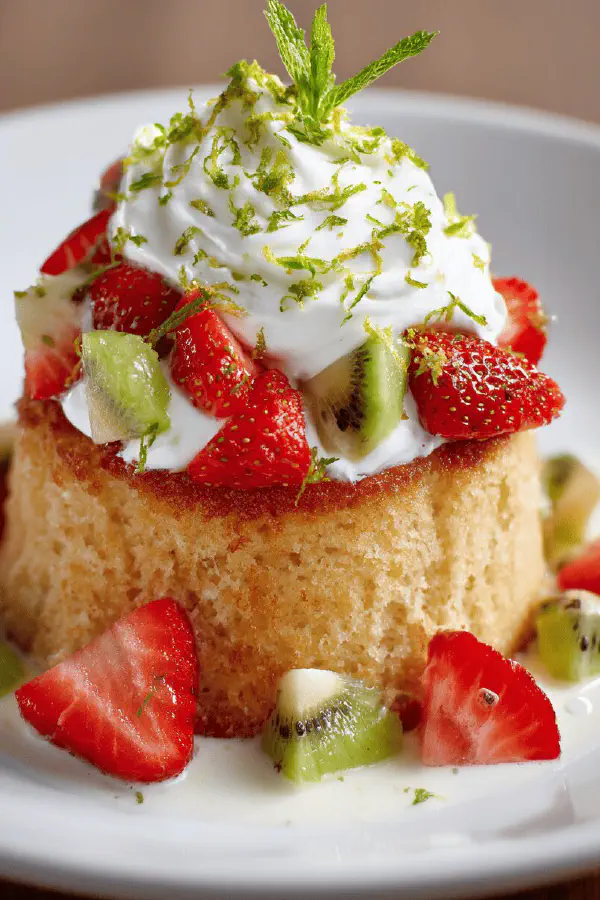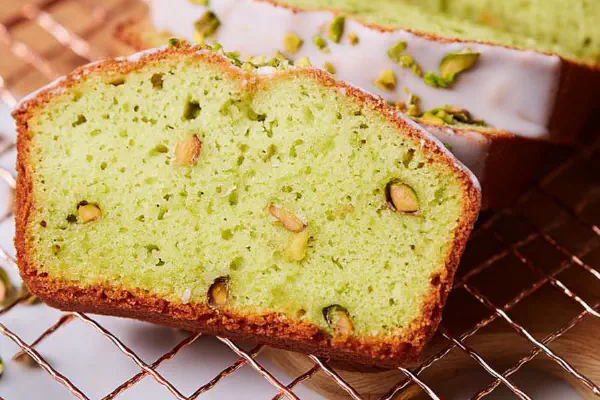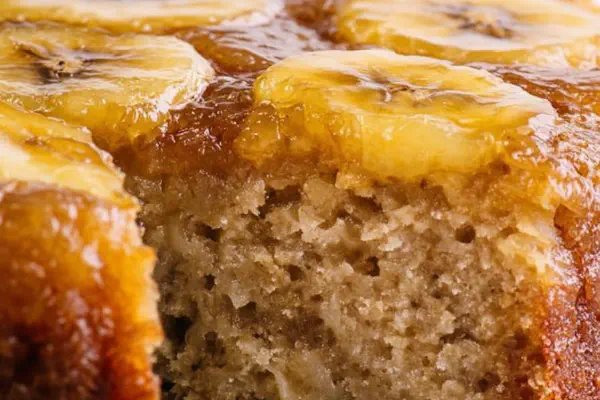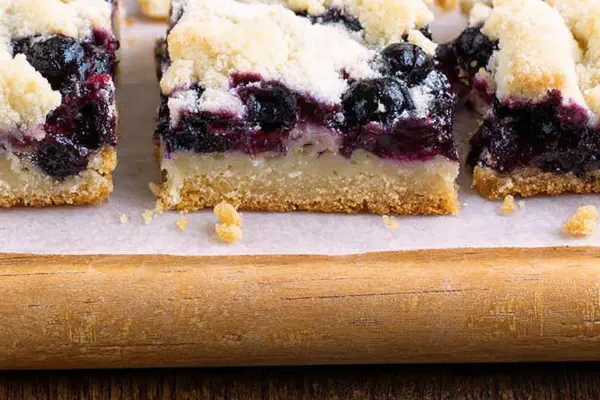Featured Recipe
Strawberry Melon Tres Leches

By Kate
"
Light sponge soaked in a mix of evaporated milk, coconut milk, and oat milk for added earthiness. Topped with whipped cream dusted with lime zest, fresh strawberries, watermelon cubes. Pineapple swapped for kiwi for tang and texture contrast. Mixes classic tres leches with fresh fruit brightness and subtle sweetness. Moist but with structure, not soggy. Serve chilled to let flavors meld.
"
Prep:
35 min
Cook:
28 min
Total:
Serves:
10 to 12 servings
cake
dessert
summer treat
Introduction
Soak sponge cake with three milks; classic technique but little tricks change outcome. Whip eggs to ribbon stage — air trapped means lighter crumb. Oil folded in last keeps moist crumb without heaviness. Baking just until toothpick emerges clean, no mushy parts inside. Immediately poke holes after baking; milk must seep deep. Pour milk syrup slowly; fast pouring means puddles and soggy parts. Chill long enough — flavors meld, cake sets. Whip cream cold; sugar balances richness. Top with whatever seasonal fruit; kiwi adds acidity over expected pineapple. Layer of zest perks up lush creamy texture. Rest in fridge; slices firm enough to serve without collapse.
Ingredients
Cake
- 160 g (1 1/4 cups) all-purpose flour unbleached
- 6 ml (1 1/4 tsp) baking powder
- 3 ml (1/2 tsp) fine sea salt
- 5 large eggs room temperature
- 170 g (3/4 cup plus 1 tbsp) granulated sugar
- 5 ml (1 tsp) pure vanilla extract
- 80 ml (5 tbsp plus 1 tsp) canola oil
- 1 can 300 ml sweetened condensed milk
- 1 can 400 ml coconut milk full fat
- 125 ml (1/2 cup) oat milk (sub for dairy milk)
- 400 ml (1 2/3 cups) heavy cream 35% fat
- 50 g (1/4 cup) granulated sugar
- 400 g (3 1/3 cups) strawberries sliced
- 320 g (2 1/2 cups) watermelon cubed, peeled
- 150 g (1 cup) kiwi peeled and diced (instead of pineapple)
- Zest of 1 lime finely grated
Milk syrup
Topping
About the ingredients
Flour measured by weight ensures accuracy; avoid scooping directly from bags which packs down. Using unbleached all-purpose keeps cake crumb tight but tender. Baking powder for rise, salt to balance sweetness. Whole eggs provide richness and lift when whipped; bringing to room temp helps volume. Oil critical for moisture; vegetable oil stable and neutral, swap with light olive oil if preferred but flavor alters. Milk syrup uses canned coconut milk for richness and subtle tropical notes; oat milk swapped for dairy to introduce mild grain sweetness and slight earthiness. Sweetened condensed milk indispensable for thick sugar syrup. Fruits fresh, ripe but firm to hold shape on top. Lime zest brightens finish. Sugar in cream sweetens but balance as per taste — overwhipping cream causes butter formation.
Method
Cake
- Set oven rack to middle. Preheat oven to 175°C (350°F). Butter or line a 33x23 cm (13x9 inch) glass baking dish. The glass helps watch color develop — golden edges tell you it’s nearing done.
- Whisk flour, baking powder, salt in a medium bowl, make sure no lumps, set aside.
- In a large bowl, beat eggs with sugar and vanilla using electric mixer at high speed until tripled in volume and ribbons hold when whisk lifted — approx 8 minutes. Texture should be light, air folded in. Don't rush this; trapped air = tender crumb.
- On low speed, drizzle oil slowly into eggs to emulsify without deflating. Fold in dry ingredients carefully with a spatula or whisk, few strokes to avoid losing volume. Batter should feel light, slightly thick but flowing. Pour evenly into prepared dish; tap gently to level and remove air pockets.
- Bake 25 to 30 minutes. Visual cues: surface golden and springy when pressed gently; toothpick inserted in center comes out clean or with few moist crumbs. Overbaking leads to dry base, defeats soaking.
- Remove from oven, immediately poke numerous holes all over surface using skewer or thick toothpick. This allows milk syrup to soak deeply rather than pooling on top. Don't wait; holes close if cake cools too long.
- In a bowl, whisk together condensed milk, coconut milk, and oat milk until homogeneous. Using a ladle or small measuring cup, slowly drizzle milk mixture starting at center of hot cake. Let it absorb slowly before adding more — prevents runoff and ensures deep soaking.
- Repeat pouring gradually across surface. Total pour should be absorbed fully; cake should feel moist but not soggy. Cool to room temperature uncovered for about 45 minutes, then refrigerate for minimum 1.5 hours to set and develop flavor.
- Chill your mixing bowl and beaters beforehand if possible; cold tools whip cream faster and hold structure better.
- Whisk heavy cream and sugar on medium-high speed until cream thickens and peaks form when whisk lifted. Don't overwhip — stops when shiny peaks hold but are not grainy.
- Spread whipped cream evenly over cold soaked cake. Decorate with sliced strawberries, watermelon cubes, and kiwi. Use lime zest for bright aromatics and slight bitterness that cuts richness.
- Serve chilled. Keeps 3 days in fridge but best within 48 hours for fresh fruit texture.
- Substituting oat milk adds mild sweetness and a touch of earthiness compared to regular milk; slight variance in soaking but enhances balance with coconut.
- Kiwi replaces pineapple to bring a little tartness and a unique texture contrast, less fibrous, more subtle bite.
- If cake seems dense after mixing, avoid overfolding batter. Fold gently until just combined for airy sponge.
- To test doneness, press gently with finger; it should bounce back slowly without sticking.
- If no coconut milk available, use evaporated milk plus a teaspoon of coconut extract but expect lighter flavor.
- Use room temperature eggs for optimal volume when whipping.
- Cover cake tightly with plastic wrap when refrigerating to prevent absorbing other odors or drying out cake surface.
Milk syrup
Topping
Tips
Technique Tips
Eggs beaten until ribbon stage key for air incorporation — takes about 8 minutes with electric mixer at high speed, no shortcuts. Oil added slowly to prevent breaking foam. Folding dry ingredients must be gentle to preserve airiness, no vigorous mixing. Bake until cake surface springs back and toothpick test clean; don’t rely solely on timer. Poking holes immediately after baking ensures syrup penetrates deeply rather than pooling. Milk poured gradually helps even saturation, avoiding soggy patches. Cooling uninterrupted preserves moisture absorption, then chill to firm cake. Whip cream cold — warm cream whips slowly or turns greasy. Spread topping evenly, decorate quickly before cream weeps. Lime zest sprinkled at last moment to keep aroma fresh. Refrigerate covered to protect from odours and to prevent cake drying out while chilled.
Chef's Notes
- 💡 Use room temp eggs for max volume. Whip eggs until ribbon stage; about 8 minutes. Don't rush. That's air getting in. A light texture is key.
- 💡 Poke holes in cake immediately. Don't wait. Those holes let syrup seep in deeply, avoid soggy spots on top. Ensures even moisture throughout.
- 💡 Gradually pour milk syrup over warm cake. Starting in the center helps absorption. Too fast? It'll just run off. Go slow and let it soak.
- 💡 Heavy cream whips best cold; chill bowl and beaters. If cream's too warm, it won't whip right. Keep consistency smooth. Don't overwhip.
- 💡 Fruit should be ripe but firm. Too soft means it won't hold on top. Kiwi can be swapped back in if desired for a familiar taste.
Kitchen Wisdom
How can I make the cake lighter?
Beat eggs until fluffy. Fold in dry slowly. No overmixing. Use unbleached flour for tenderness.
What if the cake is dry?
Check baking time. Avoid overbaking; golden edges are good. If you don't poke holes, syrup won't soak well.
Can I substitute the milks?
Yes, but keep it rich. For coconut milk, use evaporated milk and a bit of coconut extract for flavor.
How to store leftovers?
Cover with plastic wrap. Refrigerate for three days. Best enjoyed within 48 hours; fruit texture changes over time.



